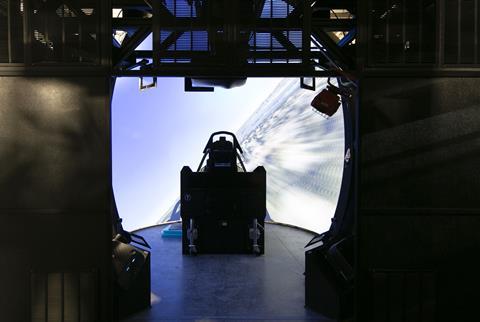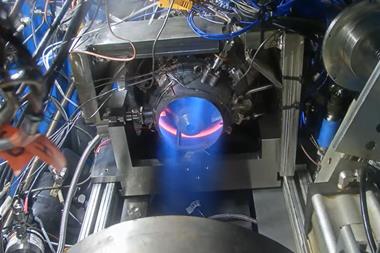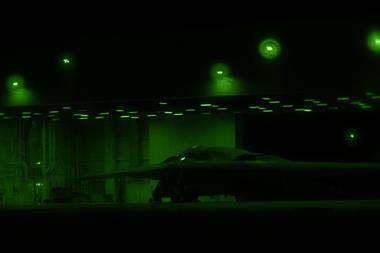US Navy (USN) officials revealed this week that a virtual test range originally created to assess the mission effectiveness of Lockheed Martin F-35 Joint Strike Fighters has also quietly been in use since 2022 to provide American and international fighter pilots with advanced training that cannot be replicated in the real world.
“We’ve been training F-35 aviators for about two years now and the demand signal is through the roof, with just about every operational F-35 squadron in the US Navy, Marine Corps and Air Force seeking time here, to get exposure to that high-fidelity threat environment,” says Blaine Summers, the Joint Simulation Environment (JSE) director for the Naval Air Warfare Center Aircraft Division (NAWCAD) at NAS Patuxent River in Maryland.

The unique, realistic training provided by the JSE already led the US military to add Lockheed F-22 cockpit simulators to the system. Officials are also working to bring Boeing F/A-18 Super Hornet, EA-18G Growler and Northrop Grumman E-2D Advanced Hawkeye simulators online.
“Just two weeks ago, we went over 1,000 F-35 pilots trained in this environment,” Summers says.
The JSE, conceived in 2016 to provide a secure venue in which to fully test the F-35’s classified sensors and mission systems, was the hurdle that delayed a full-rate production decision for the fighter until just last month, almost nine years after it first became operational with the US Marine Corps (USMC).
But even as NAWCAD struggled with completing and validating the JSE, the idea to use the virtual battle space as a state-of-the-art joint service training aid took hold, Summers says.
In early 2022, instructor and student pilots from the US Air Force (USAF) Weapons School’s 6th Weapons Squadron, headquartered at Nellis AFB near Las Vegas, travelled to NAS Patuxent River to use the JSE for a sprawling training exercise.
“They executed 32 defensive counter-air missions,” Summers recalls. “Each of those missions was eight F-35s against up to 20 [adversary] threats. So eight aircraft versus 20 aircraft, 32 times. That’s just unheard of. We can’t do that on our open-air ranges. Most of our low-end simulators don’t have the reliability to get that kind of throughput. That’s when JSE for training was born.”
The JSE is a collection of networked simulators located in NAWCAD’s Patuxent River facilities. Eight F-35 cockpits, now joined by four F-22 cockpits, each reside within 4.6m (15ft)-wide domes – giving pilots a 300° field of view and immersing them in the virtual environment.
Pilots take a seat in F-35 and F-22 cockpits that “match the real jets down to the part number”, with every button, screen, switch and sensor being identical to those found on actual fighters, Summers says.
The simulated cockpits also run the actual operational flight programmes found on the fighters – “Real code from the jet, re-hosted in our environment”, Summers stresses.
A multitude of complex mission scenarios, incorporating thousands of threats derived directly from the US intelligence community’s latest models, can be simulated on the JSE digital range. Adversary aircraft and weapons, and electromagnetic, infrared and cyberspace threats, can be integrated in varying combinations, simulating enemy and friendly forces.
Summers says the JSE allows the US military to expose its weapon systems and aviators to a well-informed, complex and dense threat environment. “We just can’t do [that] on our open-air ranges because we don’t have the quantity of equipment, the quantity of aircraft or the complexity of systems.”
The JSE allows fighter pilots to fully exercise aircraft, weapons and sensors while out of sight of adversaries. It is a closed enclave where USN, USAF and USMC aviators can “execute formal tactics and experiment with new ones”, Summers says.

The integration of weapons systems within the JSE is set to expand. F/A-18 and EA-18G cockpits are now being added, and E-2D cockpits and tactical work stations are to join this calendar year, Summers says.
Plans also call for JSE updates to accommodate future and emerging platforms, including the Next Generation Air Dominance sixth-generation fighter, the Northrop B-21 stealth bomber and autonomous drones known as collaborative combat aircraft.
JSE training is already part of the formal curriculum for the services’ weapons schools. The facility provides pre-deployment training for fighter squadrons across the military.
By 2025, the US military plans to integrate elements of the digital-range environment into the integrated test-training facility at NAS Fallon in Nevada, home to the USN’s Strike Fighter Tactics Instructor Programme, better known as TOPGUN.
In 2028, the USAF expects to receive a full high-fidelity JSE with F-35 and F-22 cockpits at its Virtual Training and Testing Center at Nellis AFB.
An effort is underway to “take the JSE capability and move it closer to warfighter concentration areas”, Summers says. “We’re working to figure out how we get this capability replicated at different navy and air force facilities all over the DoD.”
Pilots who train at the JSE come away understanding its value as the only training environment “short of war” that realistically simulates how they would fight peer adversaries in actual air combat, Summers says.
“Often, the operators say this is the first time sitting in a cockpit [that] they have had a true sense of fear,” he adds. “That’s because the threat representation is high quality. That F-35 operator is getting visible and audible warnings. They’re getting engaged with weapons. They’re getting punished if they make mistakes tactically.”



































